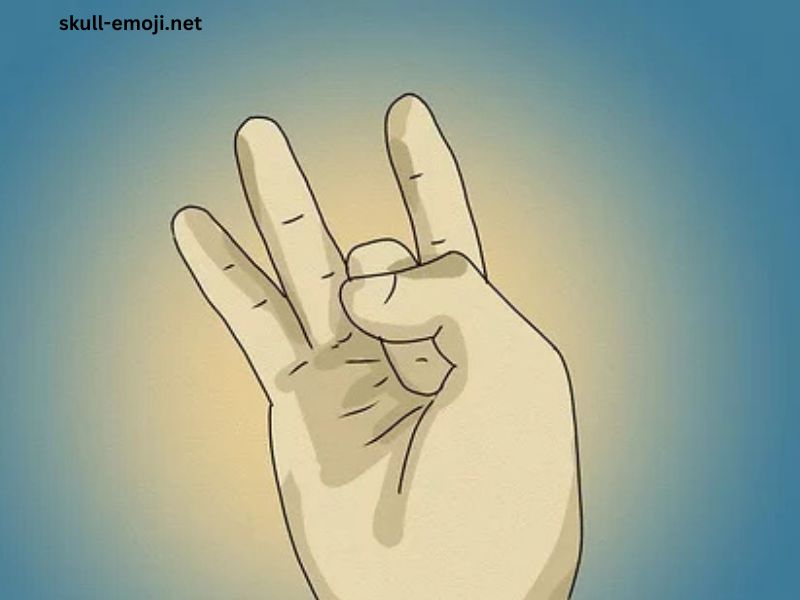The middle finger is universally recognized as a vulgar gesture, often understood as an obscene sign of disrespect or insult. In many Western cultures, raising the middle finger is a clear indication of anger or disdain. However, the significance of gestures can vary dramatically across different cultures. One such example is the so-called “Chinese middle finger,” a gesture that often surprises those unfamiliar with its meaning and cultural context. In this article, we will explore the origins, interpretations, and cultural nuances associated with this gesture, as well as how it reflects broader themes in communication and social behavior.
Understanding the Gesture
The “Chinese middle finger” typically refers to a gesture where the middle finger is raised, but it carries a different meaning compared to its Western counterpart. In China, this gesture can signify a range of emotions from playful teasing to frustration, depending on the context in which it is used. The act of raising the middle finger may not always be intended as an insult; instead, it can be part of a more nuanced form of communication among friends or peers.
Historical Context
To understand the significance of the Chinese middle finger, it is essential to consider the historical context of gestures in Chinese culture. Throughout history, non-verbal communication has played a crucial role in Chinese society. The rich tapestry of gestures and body language has developed over millennia, reflecting Confucian values, social hierarchies, and interpersonal relationships.
In traditional Chinese culture, restraint and subtlety in communication were highly valued. Consequently, gestures often carried layered meanings, and the context of the situation was critical for interpretation. The Chinese middle finger, therefore, is part of this complex system of non-verbal cues.
The Dual Meaning of the Gesture
In China, the gesture of raising the middle finger can be interpreted in two primary ways:
- Playful Teasing: Among friends or in casual settings, raising the middle finger can be a lighthearted way of teasing someone. It can be used to indicate mock anger or frustration without serious intent. In this context, it’s similar to other playful gestures, such as sticking out one’s tongue or making a silly face. The recipient usually understands that the gesture is not meant to offend but rather to convey a sense of camaraderie.
- Expressing Anger or Frustration: In more serious contexts, the middle finger can indeed signify genuine anger or disrespect. This interpretation aligns more closely with Western perceptions of the gesture. When used in confrontational situations, it can signal a breakdown in communication or a strong emotional response to a particular issue.
Cultural Variations and Similar Gestures
While the Chinese middle finger has its own unique connotations, it’s interesting to explore how similar gestures are interpreted in other cultures. For example, in some Middle Eastern countries, the “thumbs up” gesture can be considered offensive, while in parts of South Asia, the “V” sign can be a symbol of peace but can also carry negative implications depending on the context.
Understanding these cultural variations emphasizes the importance of context in interpreting gestures. The middle finger, while often considered a straightforward insult in many cultures, serves as an example of how gestures can morph in meaning based on social and cultural contexts.
The Role of Context and Intention
The intention behind a gesture is critical to its interpretation. In Chinese culture, the context in which the middle finger is raised can significantly alter its meaning. For instance, if friends are joking around during a night out, one might raise their middle finger playfully while laughing, indicating light-hearted frustration or banter. Conversely, if someone is engaged in a heated argument, raising the middle finger can serve as an escalation of conflict, clearly indicating anger or disrespect.
This complexity illustrates the necessity of understanding not just the gesture itself but also the social dynamics at play. Gestures are not isolated expressions; they are woven into the fabric of interpersonal relationships and cultural practices.
Broader Implications in Communication
The discussion of the Chinese middle finger also brings to light broader implications for communication styles across cultures. Different cultures prioritize different modes of communication, with some valuing directness and others favoring indirectness. In Chinese culture, for example, indirect communication is often preferred, and gestures can be a way to convey messages without overtly stating them.
The Importance of Non-Verbal Communication
Non-verbal communication encompasses a wide range of behaviors, including facial expressions, body language, and gestures. The Chinese middle finger exemplifies how a simple gesture can convey complex emotions and attitudes. This reflects a broader understanding of the significance of non-verbal cues in communication.
In many cultures, the way something is said can be just as important as what is being said. In a high-context culture like China, where the environment and relational dynamics heavily influence interactions, understanding the subtleties of gestures is crucial for effective communication.
The Impact of Globalization
As globalization continues to intertwine cultures and societies, the meanings of gestures can shift and evolve. The Chinese middle finger, once a relatively localized gesture, has begun to gain attention outside of China, especially among younger generations who are more exposed to global media and trends. This exposure can lead to a blending of meanings; for example, Western interpretations of the middle finger may begin to influence how it is perceived in China and vice versa.
Navigating Cultural Sensitivities
Given the varied interpretations of the middle finger across cultures, it is essential for individuals engaging with different cultural contexts to be aware of the potential for misunderstandings. What may seem like a harmless gesture in one culture can be highly offensive in another. This awareness is particularly important in an increasingly interconnected world where people from diverse backgrounds interact more frequently.
Conclusion
The Chinese middle finger serves as a fascinating example of how gestures can carry different meanings across cultures. Understanding the dual interpretations of this gesture—whether as playful teasing or a serious insult—highlights the importance of context, intention, and cultural awareness in communication.
As societies become more interconnected, the need for cultural sensitivity and understanding becomes paramount. The evolution of gestures like the Chinese middle finger reflects broader trends in globalization, where cultural exchanges can lead to shifts in meaning and interpretation. Ultimately, recognizing the significance of gestures in communication can foster better relationships and enhance our ability to navigate the complexities of cross-cultural interactions.
In conclusion, whether raised in jest or in anger, the Chinese middle finger encapsulates the rich interplay of language, culture, and human emotion, reminding us that even simple gestures can carry profound significance.



